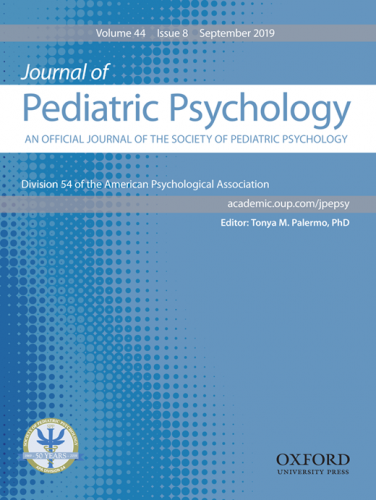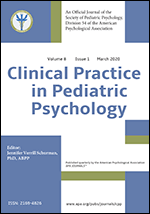Cognitive-Behavioral Therapy for Parents and Families of Youth with Chronic Medical Conditions
Editors: Emily F. Law, Ph.D.; Emma Fisher, Ph.D.
Date: July, 2019
Empirical review status: Insufficient Evidence: Existing meta-analyses are not of sufficient quality.
Summary of sample characteristics across studies:
| Variable | Example |
| Child Age | Across trials, there was variability in the age range of children:
|
| Child Sex | All trials enrolled both male and female children |
| Parent Sex | Three studies enrolled only mothers (Sahler et al., 2002; Sahler et al., 2005; Sahler et al., 2013). The remaining studies enrolled >90% mothers (e.g., Seid et al., 2010; Wade et al., 2005). |
| Family Ethnicity/Race | The majority of trials enrolled primarily Caucasian/Non-Hispanic families. In two trials, participants were primarily Hispanic (Sahler et al., 2013; Seid et al., 2010). |
| Therapist type | In the majority of trials, treatment was delivered by master’s level therapists or Ph.D. students. |
| Presenting problem |
|
| Socioeconomic status | In the majority of trials, average socioeconomic status of families was middle to upper class. In a few trials, families were from predominantly lower socioeconomic backgrounds (e.g., Nansel et al., 2012; Sahler et al., 2013; Seid et al., 2010) |
| Language | In two trials, the intervention was delivered in English and Spanish (Sahler et al., 2005; Sahler et al., 2013; Seid et al., 2010). In all other trials the intervention was delivered in English. |
Brief summary of treatment:
- Basic premise: Adaptation to the child’s chronic medical condition is influenced by the interaction between social/environmental, cognitive, behavioral, and emotional factors.
- Essence of therapy: Cognitive-behavioral therapy includes a range of techniques that promote identifying, challenging and modifying maladaptive or negative thoughts and behaviors that interfere with adjustment to and management of the child’s medical condition.
- Length: Treatment duration for children: 0-12 hours. Treatment duration for parents: 2-16 hours.
Treatment resources:
Treatment Manual Available For Purchase
Cognitive-Behavioral Therapy for Chronic Pain in Children and Adolescents (Palermo, 2012)
Self-Help Books
Managing Your Child’s Chronic Pain (Palermo & Law, 2015)
When Your Child Hurts: Effective Strategies to Increase Comfort, Reduce Stress, and Break the Cycle of Chronic Pain (Coakley, 2016)
Worksheets/Handouts
See Worksheets/Handouts in Cognitive-Behavioral Therapy for Chronic Pain in Children and Adolescents (Palermo, 2012)
Key review articles
- Law, E., Fisher, E., Eccleston, C., & Palermo, T. M. (2019). Psychological interventions for parents of children and adolescents with chronic illness. The Cochrane database of systematic reviews, 3, CD009660.
- Law, E.F., Fisher, E., Fales, J., Noel, M., & Eccleston, C. (2014). Systematic review and meta-analysis of parent and family-based interventions for children and adolescents with chronic medical conditions. Journal of Pediatric Psychology 39(8), 866-886.
- Sansom-Daly, U. M., Peate, M., Wakefield, C. E., Bryant, R. A., & Cohn, R. J. (2012). A systematic review of psychological interventions for adolescents and young adults living with chronic illness. Health Psychology, 31(3), 380.
Click here for additional Clinical Trials, Systematic Reviews, and Meta-Analyses.



